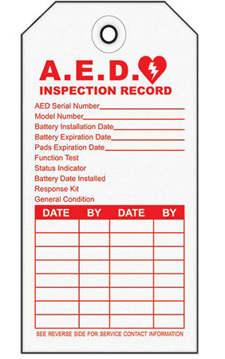| The Home page of ILPI's Safety Data Sheet (SDS) Resource, the leader in SDS information since 1995! | |
| The history and philosophy behind this resource. | |
| A curated collection of books and reference materials concerning Safety Data Sheets and closely related topics. | |
| Paste your plain text SDS into the SDS-Demystifier, and it will be converted into a hypertext-enriched document with links to detailed explanations of each key term. | |
| An extensive list of frequently asked questions about Safety Data Sheets including regulations, content, compliance, and more. | |
| A humorous take on Safety Data Sheet jargon. Fill in the blanks on our entry form to generate a personalized Unsafety Data Sheet to share with your coworkers. | |
| Since 1995, we've maintained this massive curated list of the best places to find Safety Data Sheets on the Internet. | |
| You are here! Way more than a glossary, this hypertext-enhanced resource covers hundreds of SDS-related terms and expert knowledge. Each entry includes both the SDS relevance and links to additional authoritative resources. | |
| Archived results of Safety Data Sheet related polls taken by some of our millions of site visitors | |
| The OSHA regulations behind SDS regulations, including the inspection guidelines and over 400 official interpretations letters under the Hazard Communication Standard | |
| Commercial suppliers of SDS authoring and management software as well as cloud compliance services. | |
| Commercial companies that will create SDS's for your specific needs as well as SDS translation companies. |

Safety signs, banners, and scoreboards? Get yours at Safety Emporium!
Definition

Secure controlled substances, fire extinguishers, and other vital items with tamper and security seals from Safety Emporium.
A coma is a deep and prolonged state of unconsciousness that results from injury (especially to the head); disease (such as encephalitis or uncontrolled diabetes); hypoxia or anoxia (from suffocation or near-drowning, for example); or exposure to toxic and/or poisonous substances.
A person who is affected with a coma is called comatose.
Additional Info
Coma is the body's least responsive level of consciousness before death. Approximately 70% of patients who lapse into coma die without regaining normal consciousness. Comas may last from a few hours to years.
Comas outwardly resemble a state of deep sleep, but are actually quite more complex. A good working definition is that a coma is a state of unresponsiveness from which an individual has not yet been aroused.
On rare occasions, doctors will induce a coma in a patient using drugs such as barbituates. This temporary procedure puts the brain into a resting state so that procedures such as brain surgery can be performed or to give the body a chance to recover from trauma. There was some hope that induced comas could be used to treat human rabies, but recent studies have determined the treatment is not effective.
Books Available
NOTE: We may collect a share of sales or other compensation from the links in the following list:
- "Coma and Disorders of Consciousness 3rd Ed", Hardcover, 335 pages, 2024. Estimated price $161.75. Info and/or order.
- "In a World of Their Own", Hardcover, 200 pages, 1997. Estimated price $90.99, includes over 100 coma patient's recollections during their comatose state. Info and/or order .
- "Comas and Syncope: Causes, Prevention, and Treatment (Neurology - Laboratory and Clinical Research Developments) 1st Ed", Paperback, 201 pages, 2012. Estimated price $134.47. Info and/or order .
- "Plum and Posner's Diagnosis of Stupor and Coma, 5th Ed", Hardcover, 520 pages, 2019. Estimated price $66.16. Info and/or order .

Get your AED signs, tags, and other first aid products from Safety Emporium.
SDS Relevance
Coma usually appears in Section 11 (toxicological information) of a Safety Data Sheet as a symptom of acute (short-term) exposure to a material. Any person who suffers unconsciousness for any reason should seek prompt medical evaluation.
A number of symptoms may (or may not) precede the comatose state, depending on the nature of the chemical and one's level of exposure. These can include dyspnea, stupor, vertigo/dizziness, malaise, lethargy etc. Read the SDS for information about symptoms that may indicate exposure to the chemicals you are working with so you can address any issues before they grow more serious.
Further Reading
- Coma (Medical) at MedicineNet.
- Ethical Guidelines For The Care Of People In Post-Coma Unresponsiveness (Vegetative State) Or A Minimally Responsive State at the the Australian government's National Health and Medical Research Council.
- Post-Coma Unresponsiveness And Minimally Responsive State - A Guide For Families And Carers Of People With Profound Brain Damage also at the Australian government's National Health and Medical Research Council.
- Overview of Coma and Impaired Consciousness at the Merck Manuals Professional version.
- Stupor and Coma at the Merck Manuals Consumer version.
- What Is a Medically Induced Coma and Why Is It Used? at Scientific American.
- The Glasgow Coma Scale at the Institute of Neurological Sciences, Glasgow.
- PBS television's Nova did an episode on comas.
See also: asphyxiation, neurotoxin, syncope.